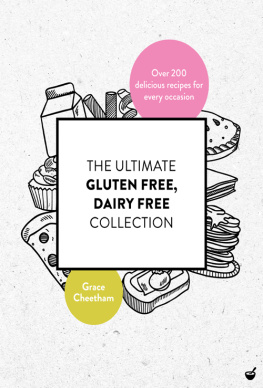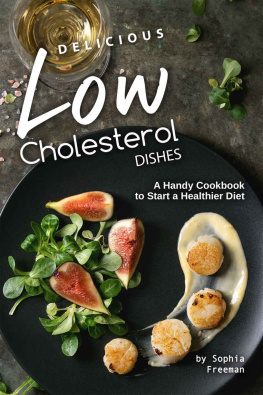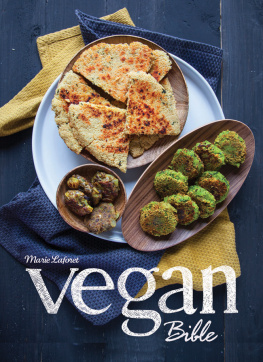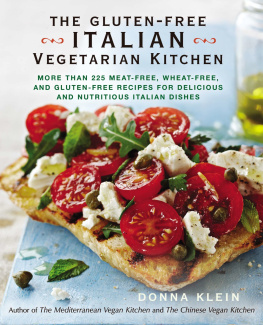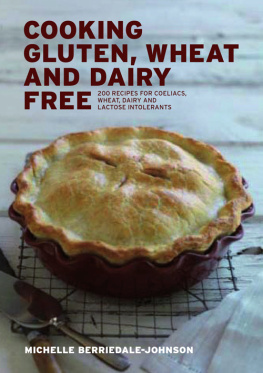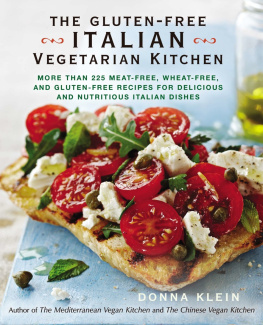Stepaniak - The Ultimate Uncheese Cookbook: Delicious Dairy-Free Cheeses and Classic Uncheese Dishes
Here you can read online Stepaniak - The Ultimate Uncheese Cookbook: Delicious Dairy-Free Cheeses and Classic Uncheese Dishes full text of the book (entire story) in english for free. Download pdf and epub, get meaning, cover and reviews about this ebook. City: Summertown, TN, year: 2005, publisher: Book Publishing Company, genre: Home and family. Description of the work, (preface) as well as reviews are available. Best literature library LitArk.com created for fans of good reading and offers a wide selection of genres:
Romance novel
Science fiction
Adventure
Detective
Science
History
Home and family
Prose
Art
Politics
Computer
Non-fiction
Religion
Business
Children
Humor
Choose a favorite category and find really read worthwhile books. Enjoy immersion in the world of imagination, feel the emotions of the characters or learn something new for yourself, make an fascinating discovery.

- Book:The Ultimate Uncheese Cookbook: Delicious Dairy-Free Cheeses and Classic Uncheese Dishes
- Author:
- Publisher:Book Publishing Company
- Genre:
- Year:2005
- City:Summertown, TN
- Rating:5 / 5
- Favourites:Add to favourites
- Your mark:
- 100
- 1
- 2
- 3
- 4
- 5
The Ultimate Uncheese Cookbook: Delicious Dairy-Free Cheeses and Classic Uncheese Dishes: summary, description and annotation
We offer to read an annotation, description, summary or preface (depends on what the author of the book "The Ultimate Uncheese Cookbook: Delicious Dairy-Free Cheeses and Classic Uncheese Dishes" wrote himself). If you haven't found the necessary information about the book — write in the comments, we will try to find it.
Stepaniak: author's other books
Who wrote The Ultimate Uncheese Cookbook: Delicious Dairy-Free Cheeses and Classic Uncheese Dishes? Find out the surname, the name of the author of the book and a list of all author's works by series.
The Ultimate Uncheese Cookbook: Delicious Dairy-Free Cheeses and Classic Uncheese Dishes — read online for free the complete book (whole text) full work
Below is the text of the book, divided by pages. System saving the place of the last page read, allows you to conveniently read the book "The Ultimate Uncheese Cookbook: Delicious Dairy-Free Cheeses and Classic Uncheese Dishes" online for free, without having to search again every time where you left off. Put a bookmark, and you can go to the page where you finished reading at any time.
Font size:
Interval:
Bookmark:
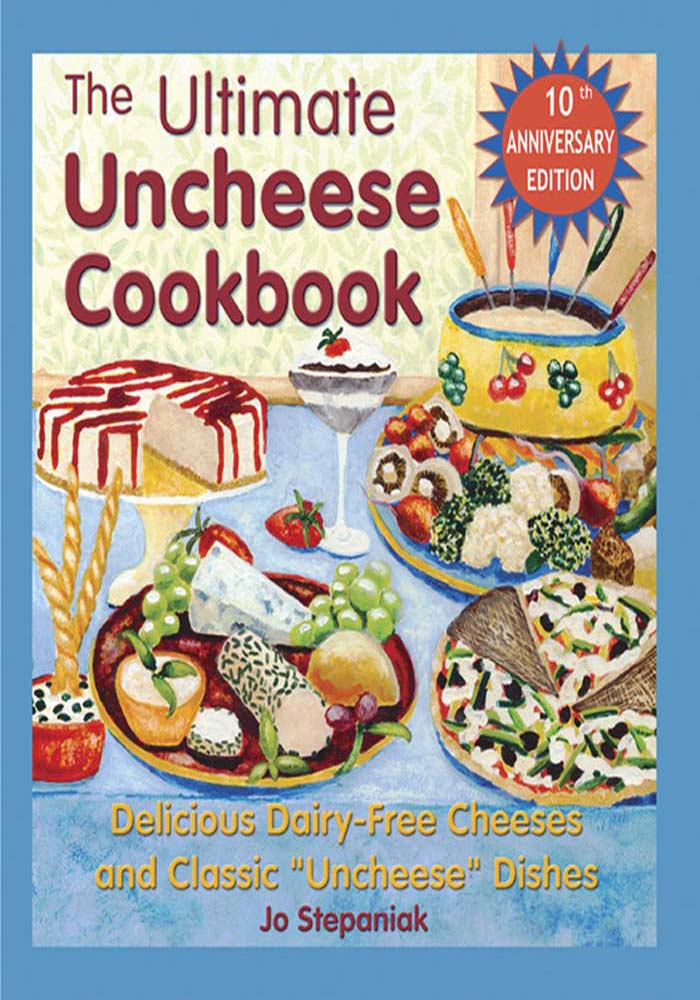

2003 Jo Stepaniak
Cover art: Linda Paul (www.lindapaul.com)
Cover design: Warren Jefferson
Interior design: Gwynelle Dismukes
Photography: Warren Jefferson
Food stylist: Barbara Bloomfield
All rights reserved. No portion of this book may be reproduced by any means whatsoever, except for brief quotations in reviews, without written permission from the publisher.
Published in the United States by
Book Publishing Company
P.O. Box 99
Summertown, TN 38483
1-888-260-8458 www,bookpubco.com
Calculations for the nutritional analyses in this book are based on the average number of servings listed with the recipes and the average amount of an ingredient if a range is called for. Calculations are rounded up to the nearest gram. If two options for an ingredient are listed, the first one is used. Not included are fat used for frying (unless the amount is specified in the recipe), optional ingredients, or serving suggestions.
Printed in Canada
ISBN10 1-57067-151-6
ISBN13 978-1-57067-151-7
14 13 12 11 10 09 10 9 8 7 6
Stepaniak, Jo, 1954
The ultimate uncheese cookbook / by Jo Stepaniak.
p. cm.
ISBN 1-57067-151-6
1. Milk-free diet--Recipes. 2. Cookery (Tofu) I. Title.
RM234.5.S739 2003
641.5'63--dc22 2003015951
The Book Publishing Co. is committed to preserving ancient forests and natural resources. We chose to print this title on paper that is 100% postconsumer recycled and processed chlorine free. As a result of our paper choice, we saved the following natural resources:

We are a member of Green Press Initiative. For more information about Green Press Initiative visit: www.greenpressinitiative.org. Paper calculations from Environmental Defense www.papercalculator.org.
by Vesanto Melina, MS, RD
People often say, I could easily give up dairy productsexcept for cheese. Its understandable. Those unique flavors and that distinctive nip are hard to dismiss. And yet we have compelling reasons to search for alternatives. For some, these reasons involve allergy or food intolerance; others are concerned about how calves and cows are exploited in the creation of cheese. Some, aware of the damage done by the dairy industry to soil, water, and air, choose to minimize their environmental footprint. Still others are concerned about the high fat content of dairy products, such as cheese, and the effects of various components of cows milk on their health.
One group that is worried about the effect of fatty foods such as cheese is New York Citys Education Department. Acknowledging that obesity is epidemic among schoolchildren, the Department is reducing the fat content in the 800,000 meals it serves daily. A recent study showed that according to the Centers for Disease Control guidelines, almost 20 percent of third graders and 21 percent of sixth graders in New York City are obese. In some neighborhoods, almost 15 percent of the population has diabetes, a condition related to diet and lack of exercise.
After trying to reformulate macaroni and cheese with more nutritious ingredients, the Department has decided to cut back on this lunchroom staple and similar dishes. In typical mac and cheese, about half the calories come from fat. Compare this with Cheez-A-Roni (page 90), in which just 21 percent of the calories come from fats. Not only are the healthful ingredients in Cheez-A-Roni packed with B vitamins, vitamin E, iron, and zinc, this delicious entre is cholesterol-free!
Cows milk has been a part of the diet for some, but not by any means all, population groups for thousands of years. How did dairy products come to be an essential food group for North Americans?
The first North American food guide was published by the U.S. Department of Agriculture (USDA) in 1916. This guide contained a recommendation to include 10 percent of ones daily calories from milk, which translated to one cup of milk daily. By the 1930s, a family food-buying guide advised each American to consume two cups of milk daily. From the 1940s on, the recommendation for dairy switched to milk and milk products. From that time forward, USDA food guides became a familiar educational and meal-planning tool in the United States. The dairy industry lobbied to ensure its strong presence on every version of the guide, with its products taking up as much as 25 percent of the area where recommended food groups were shown. Then the industry did its best to get its message to every school child and adult in America, as it continues to do today.
It has long concerned some nutritionists that the USDA has a dual role: on one hand to provide nutrition advice to the public, and on the other to ensure the success of American agriculture. There was an understandable desire for economic recovery from the depression and for agricultural prosperity after the war. This emphasis persists today amidst even more powerful lobbying from the dairy and meat industries. Accordingly, we should take this into account when evaluating health advice from the USDA.
In 1943, the National Research Council of the National Academy of Sciences released the first recommended dietary allowances (RDAs). The RDAs focused attention on recommended intakes for specific nutrients: minerals such as calcium, and vitamins such as riboflavin. These recommended intakes are best guesses by a group of scientific experts and include large safety margins. The RDAs have become a gold standard against which diets can be judged.
Through the first half of the twentieth century, and beyond, the science of nutrition was focused on overcoming deficiencies of various nutrients, for example on getting enough protein. Food guides reflected this concern. Yet for decades, awareness had been mounting that deficiency was not the whole story. Recognition was growing that excesses of fatty, high-protein, and salty foods could also be a problem, leading to devastating and deadly chronic diseases: coronary artery disease, various cancers, diabetes, strokes, obesity, and osteoporosis.
The 1992 pyramid was the first food guide to consider the harmful effects of over nutrition. Yet the original pyramid met such heavy pressure from food industry lobbyists, for example from The National Cattlemens Association, that it was not released for a year, and not in its original, more health-oriented form.
Dr. Marion Nestle, the chair of New York Universitys Department of Nutrition and Food Studies, managed the production of the first (and only) Surgeon Generals Report on Nutrition and Health in 1988. In her book Food Politics: How the Food Industry Influences Nutrition and Health (University of California Press, 2002) she provides examples of her experience with the food industrys influence on government dietary guidelines. My first day on the job, I was given the rules: No matter what the research indicated, the report could not recommend eat less meat as a way to reduce intake of saturated fat The producers of food that might be affected by such advice would complain to their beneficiaries in Congress, and the report would never be published.
Not only does the U.S. Government en courage our use of dairy products through massive national nutrition education programs, it provides direct and indirect economic support to agricultural systems that produce milk, meat, and other similar commodities. One reason for the low cost of such foods is the multitude of subsidies, often in areas that escape our detection. Taxpayers support production quotas, market quotas, import restrictions, deficiency payments, lower tax rates, low-cost land leases, land management, water rights, marketing programs, and promotion programs. In a four-year period, from 1996 to 2000, agricultural subsidies took a 55 percent leap from about $18 billion to $28 billion annually.
Font size:
Interval:
Bookmark:
Similar books «The Ultimate Uncheese Cookbook: Delicious Dairy-Free Cheeses and Classic Uncheese Dishes»
Look at similar books to The Ultimate Uncheese Cookbook: Delicious Dairy-Free Cheeses and Classic Uncheese Dishes. We have selected literature similar in name and meaning in the hope of providing readers with more options to find new, interesting, not yet read works.
Discussion, reviews of the book The Ultimate Uncheese Cookbook: Delicious Dairy-Free Cheeses and Classic Uncheese Dishes and just readers' own opinions. Leave your comments, write what you think about the work, its meaning or the main characters. Specify what exactly you liked and what you didn't like, and why you think so.

